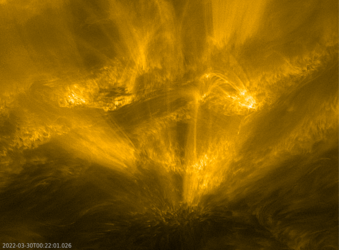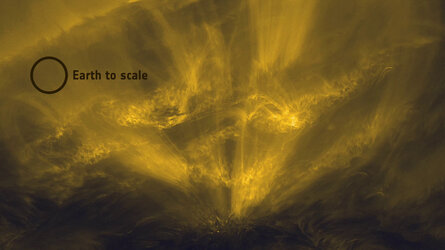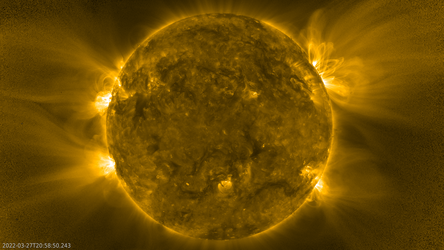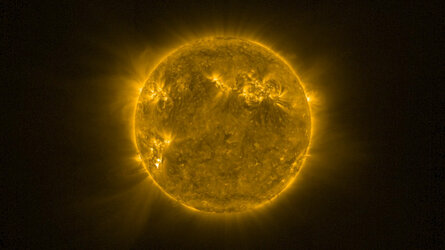
Solar Orbiter’s space hedgehog
The intriguing feature in the bottom third of the image, below the centre, has been nicknamed the solar hedgehog. At present no one knows exactly what it is or how it formed in the Sun’s atmosphere. The image was captured on 30 March 2022 by the Extreme Ultraviolet Imager (EUI) at a wavelength of 17 nanometres. Just days earlier, Solar Orbiter had passed through its first close perihelion. At just 32 percent the distance of the Earth from the Sun, this placed the spacecraft inside the orbit of the inner planet Mercury.
Being closer to the Sun than any previous solar telescope has allowed EUI to take exquisitely detailed images of the solar atmosphere. These are revealing the Sun as never before, and have shown a multitude of intriguing features such as the hedgehog, which although classed as a small-scale feature still measures some 25 000 km across, making it around twice the diameter of the Earth.
The gases shown in this image have a temperature of around one million degrees. The image has been colour coded because the original wavelength detected by the instrument is invisible to the human eye.






